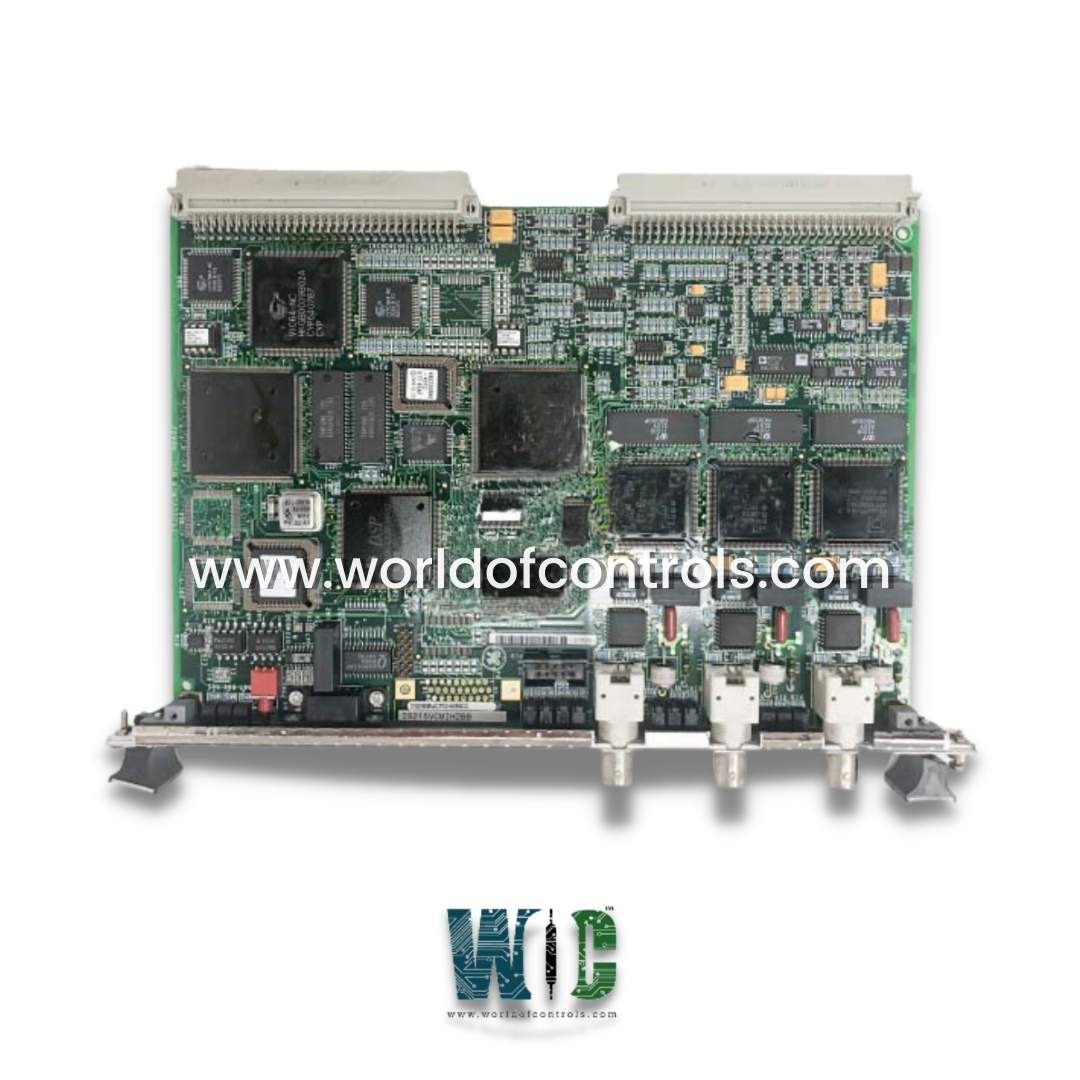SPECIFICATIONS
Part No.: IS200VCM1H2B
Manufacturer: General Electric
Product Type: Bus Master Controller Board
Board Type: 6U high VME board
Size: 0.787 inch wide
Processor: Texas Instruments TMS320C32 32-bit
Dual-port memory: 32 Kbytes in 32 bit transfer configuration
SRAM: 256k x 32
Flash memory: 512k x 8-VCMIH_B; 4096K
Technology: Surface mount
Temperature Operating: -30 to 65oC
Availability: In Stock
Country of Manufacture: United States (USA)
Series: Mark VI
Functional Description
IS200VCM1H2B is a Bus Master Controller Board developed by GE. It is a part of Mark VI control system. Serving as the bus master within the VME I/O rack, this board plays a critical role in orchestrating communication between the main controller, I/O boards, and the IONet system control network. Its function is foundational to the coordination, reliability, and high-speed data handling required in advanced turbine and industrial control systems.
Features
- Controller-to-I/O Communication Interface: Acts as the primary interface between the controller and installed I/O boards. Facilitates high-speed, bi-directional data transmission. Ensures accurate and synchronized control and monitoring across all connected subsystems.
- System Control Network Integration (IONet): Provides the essential communication bridge between the controller and the IONet network. IONet supports deterministic, real-time control and coordination across a distributed control architecture. Enables synchronization between multiple racks and system components.
- VME Bus Master Functionality: Operates as the VME bus master, managing bus arbitration, control signals, and timing protocols for data exchange. Oversees orderly communication between the VME processor and various slave I/O modules. Reduces data latency and ensures deterministic performance across the VME backplane.
- Board and Terminal Identification Management: Assigns and manages unique identifiers (IDs) to all VME boards and their associated terminal boards. Maintains system integrity by ensuring that each component has a distinct and recognizable address. Prevents communication conflicts and ensures accurate targeting of data transactions.
- Enhanced System Coordination and Reliability: Provides a centralized communication hub within the VME rack. Enhances coordination across all control layers, improving system efficiency and operational stability. Supports scalable and modular expansion of the Mark VI control system by simplifying I/O and network integration.
Diagnostics
- The board is equipped with advanced diagnostic capabilities to monitor internal power supplies and ensure stable operation within the Mark VI control system. One of the key functions of the diagnostics is the continuous monitoring of internal power supply buses, including 5 V, 12 V, 15 V, and 28 V. Each of these buses has built-in alarm functionalities that trigger alerts if the voltage deviates from the specified limits. Most power supplies are set with a 3.5% threshold, while the 28 V supply has a slightly wider tolerance of 5.5 percent. These thresholds are carefully chosen to ensure accurate fault detection without triggering unnecessary alarms due to minor fluctuations.
- In addition to internal voltage monitoring, the board also receives diagnostic signals from the Power Distribution Module (PDM) through connector J301. These signals include ground fault detection on the P125 V bus, and over/under voltage monitoring to ensure the P125 V supply remains within its operational limits. The system also monitors two differential 5 V DC analog inputs (P28A and PCOM) to validate external monitor circuit stability. Furthermore, digital inputs from the PDM provide status and control signals for various critical functions and components across the system.
- Alarm settings for all diagnostic functions are configurable, providing operators with the flexibility to adjust thresholds according to specific application needs or environmental conditions. This customization ensures optimal sensitivity while minimizing the chance of false alarms. Accurate configuration helps operators maintain tight control over system parameters and adapt quickly to operational changes.
- By integrating these diagnostic features into the overall architecture of the Mark VI system, the board ensures comprehensive real-time monitoring of vital power and signal parameters. Fast detection of anomalies, such as voltage irregularities or ground faults, allows for timely interventions that minimize downtime and maintain system reliability.
World of Controls has the most comprehensive collection of GE Mark VI components. Please contact WOC as soon as possible if you require any extra information.
Frequently Asked Questions
What is IS200VCM1H2B?
It is a Bus Master Controller Board developed by GE
What power supply buses are monitored within the system?
The system monitors several internal power supply buses, including 5 V, 12 V, 15 V, and 28 V. These buses are critical for providing stable power to various components within the system.
How are alarm settings configured for the power supply buses?
Alarm settings for the power supply buses are typically set at 3.5 percent deviation from nominal voltage levels, except for the 28 V supplies, which have a wider threshold set at 5.5 percent. These settings ensure that alerts are triggered when voltage deviations exceed safe operating limits.
Why are configurable alarm settings important for diagnostics?
Configurable alarm settings allow operators to adjust thresholds based on specific operational requirements and environmental conditions. This flexibility helps minimize false alarms and ensures that critical deviations are promptly detected and addressed.
